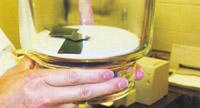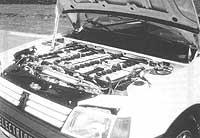Lithium-polymer battery operation
2000/09/01 Azkune Mendia, Iñaki - Elhuyar Fundazioa Iturria: Elhuyar aldizkaria
In the basic lithium-polymer battery cell the leaves are above each other. Negative electrode is lithium sheet, positive electrode metal oxide sheet and electrolyte solid polyethylene oxide sheet. In this sheet of polyethylene oxide go lithium ions on ion bridges between polymer chains.
When the electrical circuit is closed, the potential difference between the electrodes establishes an electric current in the conductors, that is, there is a flow of electrons from the negative to the positive electrode. To balance it, atoms in negative electrode metal lithium release the electron and as positive ions traverse the electrolyte and target the positive electrode. The positive electron accumulates ions and supplies electrons to neutralize its charge.
To ensure the reversibility of the reactions it is necessary to stop the reactions and charge the battery before consuming all the active matter. For this it is necessary to connect the power source to the two electrodes. This works as a pump to remove electrons from the positive electrode and take them to the negative (see attached diagram). In turn, lithium ions go to the negative electrode.

Gai honi buruzko eduki gehiago
Elhuyarrek garatutako teknologia






